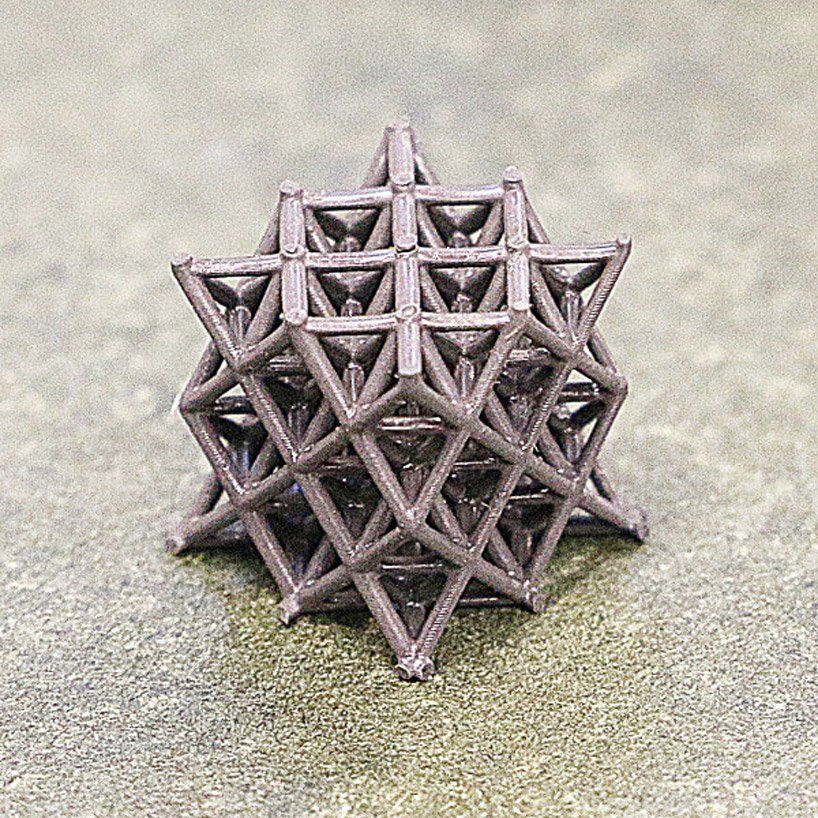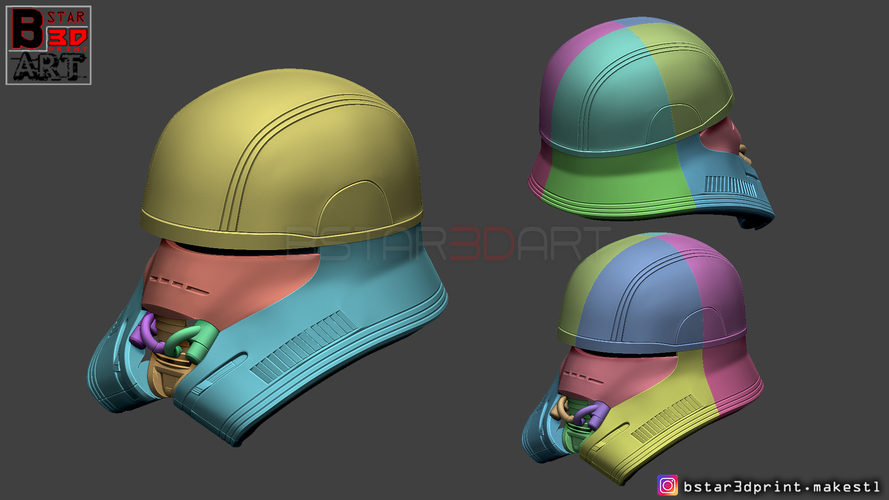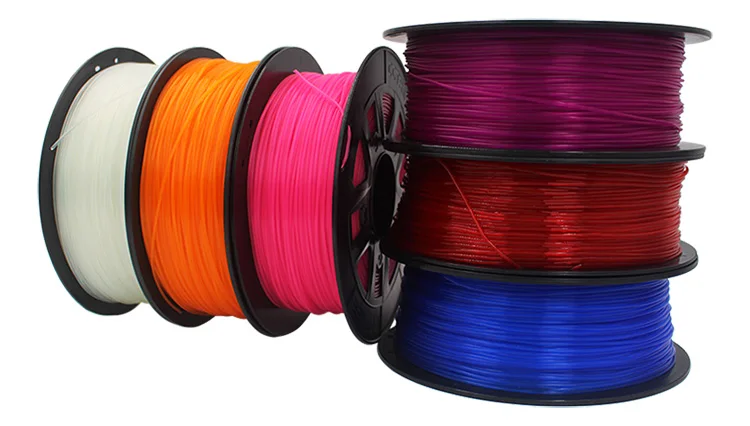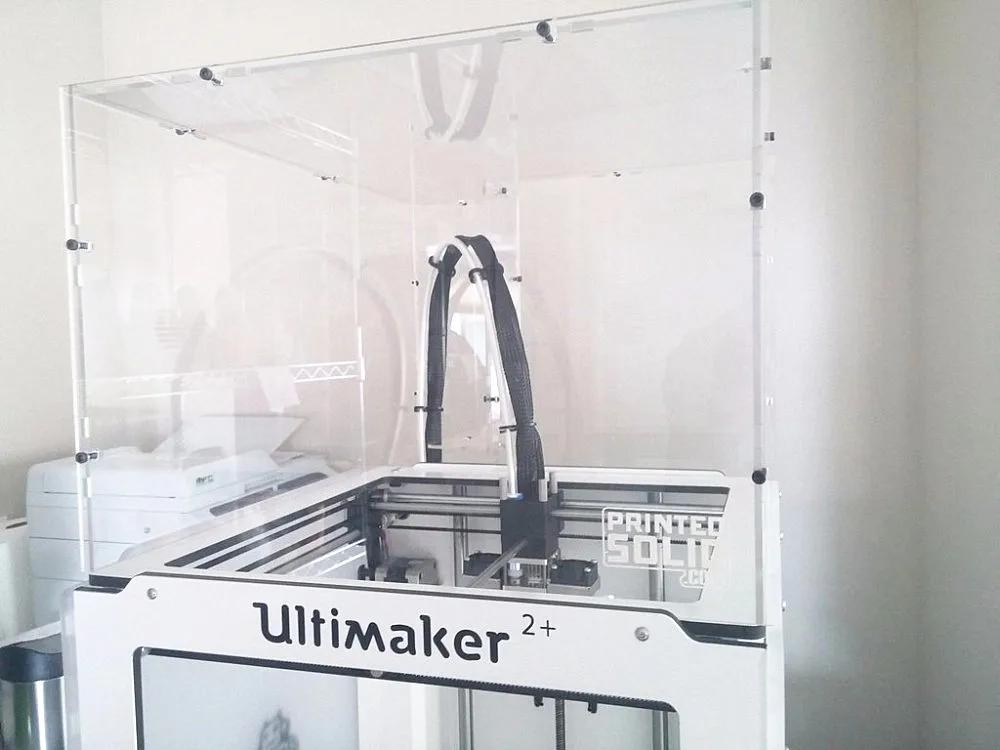3D print sound waves
New type of 3D printing uses sound waves to build up objects
3D Printing
View 2 Images
3D printing typically involves depositing layers of molten plastic, laser-melting powdered metal, or using UV light to harden gelatinous resin. A new technique takes yet another approach, however, by utilizing sound waves.
Developed by a team of scientists at Canada's Concordia University, the technology is known as direct sound printing (DSP).
In the current version of the technique, a transducer is used to send focused pulses of ultrasound through the sides of a chamber, into liquid polydimethylsiloxane (PDMS) resin contained within. Doing so produces ultrasonic fields, which cause rapidly oscillating microscopic bubbles to temporarily form at specific points in the resin.
As those bubbles oscillate, the temperature inside them rises to about 15,000 degrees Kelvin (14,727 ºC or 26,540 ºF) and the pressure within them climbs to over 1,000 bar (14,504 psi). Although this sudden increase in temperature and pressure only lasts for picoseconds (trillionths of a second), it causes the resin to solidify at the exact location of the bubble.
Therefore, by incrementally moving the transducer along a predetermined path, it's possible to build up an intricate three-dimensional object – one tiny pixel at a time. Along with its ability to produce very small, detailed items, DSP also allows structures to be non-invasively printed inside other structures that have opaque surfaces.
A diagram illustrates how DSP could be used to print a structure within a patient's armConcordia University
For instance, utilizing the technique, aircraft mechanics could conceivably 3D-print repairs onto internal components, without opening the plane's fuselage. It's even possible that implants could be 3D printed within a patient's body, without the need for surgery.
It's even possible that implants could be 3D printed within a patient's body, without the need for surgery.
Besides the PDMS resin, the scientists have also successfully used DSP to print objects made of ceramic material. They now plan on experimenting with polymer-metal composites, followed by pure metal.
"Ultrasonic frequencies are already being used in destructive procedures like laser ablation of tissues and tumours," said Prof. Muthukumaran Packirisamy, who led the study along with Dr. Mohsen Habibi and PhD student Shervin Foroughi. "We wanted to use them to create something."
A paper on the research was recently published in the journal Nature Communications. The technique is demonstrated in the video below.
Using sound for 3D printing
Source: Concordia University
Ben Coxworth
Based out of Edmonton, Canada, Ben Coxworth has been writing for New Atlas since 2009 and is presently Managing Editor for North America. An experienced freelance writer, he previously obtained an English BA from the University of Saskatchewan, then spent over 20 years working in various markets as a television reporter, producer and news videographer. Ben is particularly interested in scientific innovation, human-powered transportation, and the marine environment.
An experienced freelance writer, he previously obtained an English BA from the University of Saskatchewan, then spent over 20 years working in various markets as a television reporter, producer and news videographer. Ben is particularly interested in scientific innovation, human-powered transportation, and the marine environment.
Sound Waves Could 3D-Print Implants Inside Your Body
Concordia University researchers have found a way to use sound to solidify liquid into plastic, a 3D-printing approach that could be used to construct medical implants directly inside a person's body.
The researchers' approach, called direct sound printing (DSP), focuses ultra high-frequency sound waves on a spot of liquid resin for only a trillionth of a second, the researchers said this week. It's very brief but very powerful, causing a tiny bubble to form that has enough energy to trigger a chemical reaction that solidifies the resin.
3D printing, while not as economical as mass manufacturing methods like injection molding for plastic, has been catching on in some areas.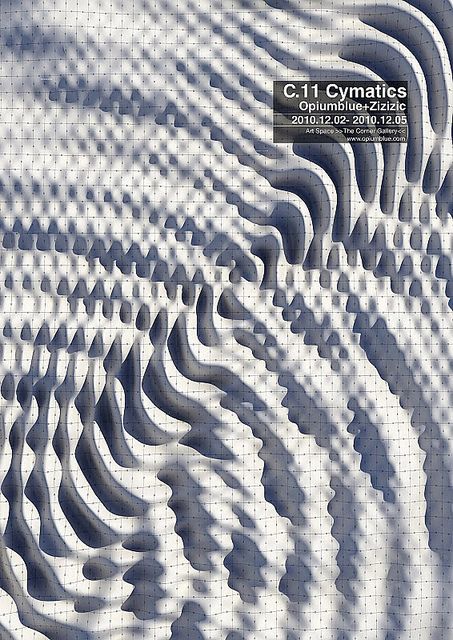 That includes making prototypes, creating one-off products like customized football helmets and building shapes that are impossible with conventional methods.
That includes making prototypes, creating one-off products like customized football helmets and building shapes that are impossible with conventional methods.
Sound-based 3D printing could add a new trick to the additive manufacturing industry. Solid materials often block light and heat, but sound can reach inside a body or device. That could lead to manufacturing an implant inside the body instead of surgically adding something made outside. The researchers tested the technology working through 1.3 inches of pig skin, muscle and fat tissue.
"DSP introduces the possibility of noninvasive deep inside body printing," Concordia researchers said in a Nature Communications paper. Some of the prototypes the researchers made include ears and noses, but they didn't construct or implant anything inside patients.
Sound waves can penetrate flesh, potentially meaning 3D printing could construct an implant inside a reservoir of material inside a person's body.
Concordia University3D printing already is used for medical and dental procedures like replacement bones and teeth straighteners. Some doctors even found a way to 3D-print a replacement ear out of the patient's own cells.
Some doctors even found a way to 3D-print a replacement ear out of the patient's own cells.
Most 3D printing solidifies materials using light or heat. Sound offers a different way to direct energy to the right spot, forming a small bubble through a process called cavitation. There, temperatures reach pressure about 1,000 times that of air at sea level and about 27,000 degrees Fahrenheit — considerably hotter than the surface of the sun that's near 10,000 degrees.
That's an intense environment, but it's very small and very short-lived, so it doesn't affect the surrounding regions.
The sound based 3D-printing approach also could work with mechanical repairs, for example servicing otherwise inaccessible components inside aircraft, the university said.
The method works on other materials besides polymer resin, too.
"We proved that we can print multiple materials, including polymers and ceramics," Concordia researcher Muthukumaran Packirisamy said in a statement.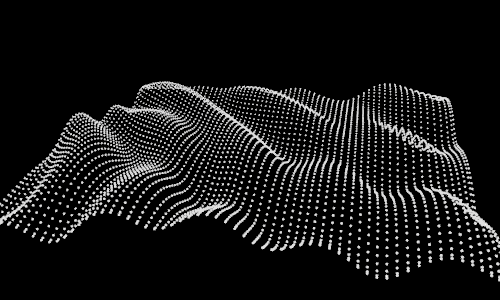 "We are going to try polymer-metal composites next, and eventually we want to get to printing metal using this method."
"We are going to try polymer-metal composites next, and eventually we want to get to printing metal using this method."
A New Type of 3D Printing Uses Sound Waves to Create Objects
3D printing typically involves applying layers of molten plastic, laser melting powdered metal, or using UV light to solidify resin. However, the new method takes another approach, using sound waves.
This technology, developed by a group of scientists at Concordia University of Canada, is known as direct sound printing (DSP).
In the current version of the method, a transducer is used to send focused pulses of ultrasound through the chamber walls into the liquid polydimethylsiloxane (PDMS) resin contained within. This creates ultrasonic fields that cause the temporary formation of rapidly oscillating microscopic bubbles at certain points in the resin. nine0003
When these bubbles vibrate, the temperature inside them rises to about 15,000 degrees Kelvin (14,727 ºF or 26,540 ºF) and the pressure inside them rises to over 1,000 bar (14,504 psi). Although this sudden increase in temperature and pressure lasts only a picosecond (trillionths of a second), it causes the resin to solidify exactly where the bubble is.
Although this sudden increase in temperature and pressure lasts only a picosecond (trillionths of a second), it causes the resin to solidify exactly where the bubble is.
In this way, by gradually moving the transducer along a given path, you can create a complex three-dimensional object - one tiny pixel at a time. Along with the ability to produce very small detailed features, DSP also allows non-invasive printing of structures inside other structures with opaque surfaces. nine0003
The diagram illustrates how DSP can be used to print the structure of a patient's hand.
Concordia University
For example, using this technique, aircraft mechanics could 3D print internal components without opening the aircraft fuselage. It is even possible that implants can be 3D printed inside a patient's body without the need for surgery.
In addition to PDMS resin, scientists have also successfully used DSP to print ceramic objects. Now they plan to experiment with polymer-metal composites and then pure metal.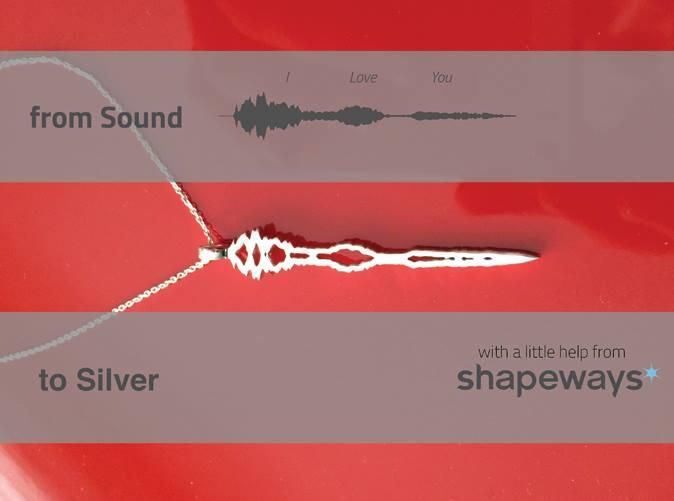 nine0003
nine0003
“Ultrasound frequencies are already being used in destructive procedures such as laser ablation of tissues and tumors,” said Prof. Muthukumaran Pakirisami, who led the research along with Dr. Mohsen Habibi and graduate student Sherwin Forugi. "We wanted to use them to create something."
An article about the study was recently published in the journal Nature Communications.
The technique is shown in the video below.
Free news distribution service for scientific organizations and start-ups
Source: New Atlas
Tags: Additive technologies 3d printing
Canadian scientists have developed a 3D printing technology that uses ultrasonic waves to work
A new printing technology uses ultrasonic waves to create complex and high-precision objects
3D printing usually involves applying layers of molten plastic, laser melting powdered metal, or using ultraviolet light to solidify a gelatinous mass.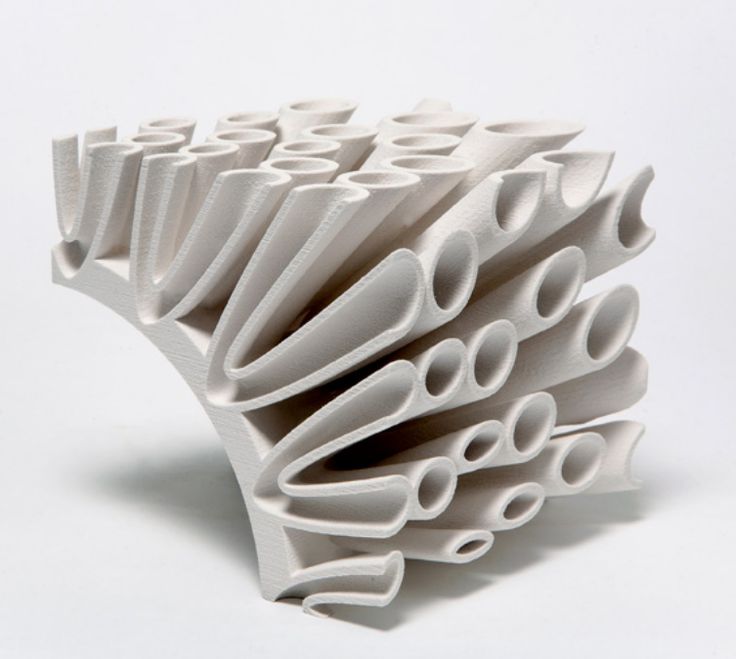 However, the new technology takes a completely different approach - sound waves. nine0003
However, the new technology takes a completely different approach - sound waves. nine0003
Direct sonic printing (DSP) uses ultrasound to create microscopic vibrating bubbles, which in turn cause the resin to cure in the right places. Depositphot os
The technology developed by a group of scientists at Concordia University of Canada is known as direct sound printing (DSP).
The current version of this technology uses a transducer that sends focused pulses of ultrasound through the chamber walls into the liquid polydimethylsiloxane (PDMS) resin contained within. This creates ultrasonic fields that cause rapidly oscillating microscopic bubbles to gradually form at certain points in the resin. nine0003
When these bubbles begin to oscillate, the temperature inside them rises to about 15,000 degrees Kelvin (14,727 ºF or 26,540 ºF) and the pressure inside them rises to over 1,000 bar (14,504 psi). Although this sudden increase in temperature and pressure lasts only picoseconds (trillionths of a second), it causes the resin to solidify exactly where the bubble was located.
In this way, by gradually moving the sensor along a given path, you can create a complex three-dimensional object (one tiny pixel at a time). Along with the ability to create very small, detailed objects, DSP allows non-invasive printing of objects inside other structures that have opaque surfaces. nine0003
The diagram illustrates how DSP can be used to print an implant in a patient's arm. Concordia University
For example, using this technology, aircraft mechanics could 3D print parts for internal repairs without opening the aircraft fuselage. It is even possible that implants can be 3D printed directly in the patient's body, without the need for surgery.
In addition to PDMS resin, scientists have successfully used DSP technology to print ceramic objects. Now they plan to experiment with polymer-metal composites, and then with pure metals. nine0003
"Ultrasound frequencies are already being used in destructive procedures such as laser ablation of tissues and malignancies," says Prof.